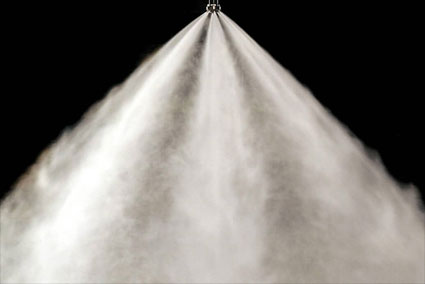What is the history of water mist for fire suppression?
Early watermist applications followed disastrous fires in passenger vessels including the Scandinavian Star in April 1990, which killed 158 people, and the Sally Albatross in January 1990. These events encouraged the nascent watermist Industry and in 1993 a series of cabin and corridor fire tests were undertaken and independently witnessed. These led to revised International Maritime Organisation fire safety requirements for passenger ships and the development of installation guidelines and fire test procedures for alternatives to conventional sprinkler systems.
The land-based breakthrough for watermist technology came at the beginning of the 1990s and was partly linked to the rapid expansion of food processing production plants that were being constructed to cope with the growing demand for ready-prepared meals and other convenience foods. The food industry recognised the benefits of watermist in rapidly suppressing or extinguishing the potentially disastrous fires which could result from the range of oil-based cooking processes carried on in such premises.

At the same time, suitable Halon replacements were being sought and watermist joined the portfolio of alternatives considered and developed by the industry.
These systems were originally limited to very specific applications requiring full-scale tests before deciding whether mist was a suitable agent. Over the last 20 years, however, much research has been carried out on the use of watermist in land-based applications. As experience grows and fire test standards are developed, watermist systems are an option for a wider range of hazards including maritime engine rooms, electrical transformers, steam turbines, data centres, homes, saunas, heritage buildings and even the international space station (as a zero-G fire extinguisher).
A desire to grow the market and investment of time has led to the production of British, European, US and International Standards and Guidelines for the design, installation, commissioning and maintenance of watermist systems to combat multiple types of fires in a wide variety of domestic, residential, commercial and industrial applications.
The use of watermist is established in certain applications such as machinery spaces as evidenced by the number of approvals and standards in this segment but less in other applications which are yet to have published standards or have only recently been published, such as data centres. As applications become established, they will have standards published to set consistent performance expectations for the technology in that application.
Read more - How does watermist fire suppression work?

